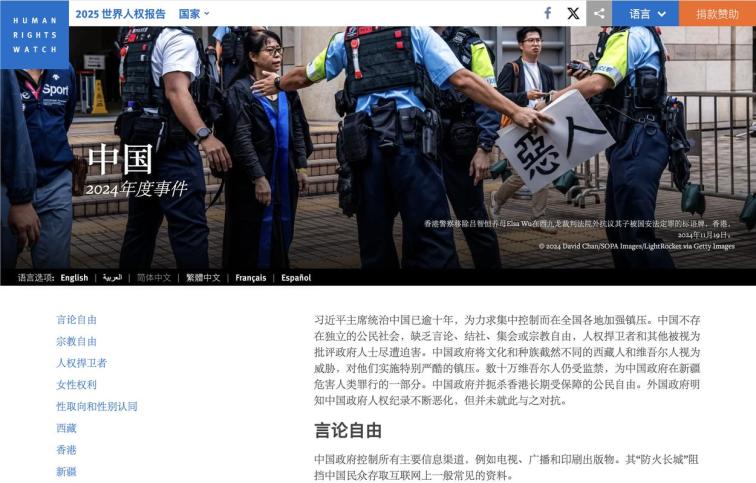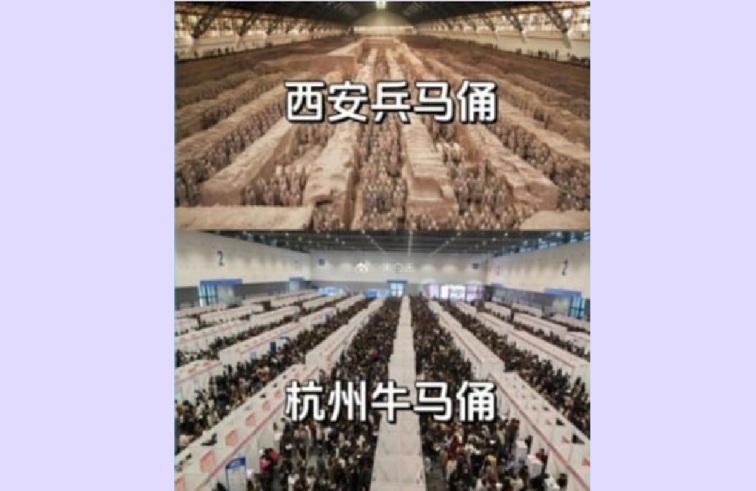Graduating from university now often leads to unemployment, and even those who return from studying abroad struggle to find jobs. (Video screenshot)
[People News] The latest data released by the Chinese Communist Party (CCP) indicates that the unemployment rate for the urban labour force aged 16-24, excluding students, reached 17.8% in July, marking a new high since August 2024. Analysts suggest that with over ten million graduates entering the job market, the unemployment rate may rise even further. The CCP's authoritarian regime often implements contradictory policies and exhibits governance failures, which are fundamental causes of China's economic challenges.
On August 19, the National Bureau of Statistics of the CCP published unemployment rate data segmented by age group, revealing that the unemployment rate for the urban labour force aged 16-24, excluding students, was 17.8% in July, an increase of 3.3% from June. This figure represents an 11-month high and is 0.7% higher than the same period in 2024, making it the second highest since the adjustment of statistical standards.
The unemployment rate for the labour force aged 25-29, excluding students, increased by 0.2 percentage points to 6.9%, which is 0.4 percentage points higher than the same period last year. Conversely, the unemployment rate for the labour force aged 30-59, excluding students, decreased by 0.1 percentage points to 3.9%, remaining unchanged from the same period last year.
Earlier, on August 15, the Bureau of Statistics reported that the national urban survey unemployment rate and the unemployment rate for 31 major cities both rose to 5.2% in July, also reaching a new high in four months.
The data presented above is based on a premise: it does not include students currently enrolled in school. This is part of a so-called 'optimisation' measure that the Chinese Communist Party (CCP) began implementing in August 2023 regarding its labour force survey statistical methods. Experts argue that this approach of excluding certain young workers is fundamentally 'misleading.'
Zhang Dandan, an associate professor at Peking University, previously noted that if we consider the approximately 16 million individuals who are 'lying flat' or relying on their families and not working as unemployed, the actual youth unemployment rate in March 2023 could reach as high as 46.5%, significantly surpassing the official figure of 19.7%.
Fang Congyan, an assistant researcher at Taiwan's National Defence Security Research Institute, highlighted in a March interview with Radio Free Asia that the CCP's decision to exclude students from its calculations is inherently flawed and tends to present a more favourable picture of the situation. For example, many graduating seniors, fearing they won't secure jobs, either voluntarily or under pressure, delay their graduation, and thus are not counted as unemployed. This indicates that the CCP has established very lenient criteria for measuring unemployment and employment, which do not accurately reflect reality. For instance, during the survey week, anyone who works for more than an hour is classified as 'employed.'
Wu Jianzhong, the secretary-general of the Taiwan Strategic Studies Association, also expressed scepticism about the low figures released by the authorities in his comments to Radio Free Asia, stating, '...the actual situation must be worse; there are certainly more dropouts, those who have not completed their studies, and individuals not included in the statistics. This amounts to selecting the most advantageous basis for their claims.' He further questioned, if all students in school are excluded, how many students are there? And how many are not in school? This information remains unknown to the public.
Some netizens abroad have commented, "Young people are struggling to find jobs; what will the future hold? This wave of unemployment is essentially the 'to be continued' of the Chinese economy!"
Wang He (王赫), an expert on Chinese issues, told The Epoch Times that the current state of the Chinese economy is quite unusual, characterised by a shortage of the overall labour population and a severe unemployment crisis. For instance, the labour population in China (ages 16 to 59) has been on a decline since it peaked in 2012. From 2020 to 2022, due to the pandemic, official data indicates that the population in this age group decreased by nearly 40 million. Alongside an ageing population, China's labour force is shrinking rapidly. What is particularly concerning is that large-scale unemployment has already emerged, suggesting that the decline in the labour population is occurring at a much slower rate than the economic recession in China. He remarked, "This is the crux of the issue. The Chinese economy is currently in a significant recession, which has resulted in a very tense employment situation." Additionally, the policies of the Chinese Communist Party (CCP) often contradict one another; for example, due to pressure on the social security fund, the authorities are advocating for delayed retirement, which conflicts with the need to address unemployment.
The CCP fails to tackle the unemployment issue and instead generates more contradictory policies. It is no surprise that Chinese netizens refer to the CCP leader as "Pig Head," "Bun," and "Two Hundred Jin," ridiculing the entire ruling system of the CCP for its governance failures.
A Beijing-based artist, Zhang Shan (张山, pseudonym), shared with The Epoch Times that the CCP system is inherently at odds with the well-being of the people—oppressive and controlling. "Only by addressing the fundamental issues of the political system can related problems potentially be resolved. The question remains, will it address the fundamental issues of its own system?" △








News magazine bootstrap themes!
I like this themes, fast loading and look profesional
Thank you Carlos!
You're welcome!
Please support me with give positive rating!
Yes Sure!